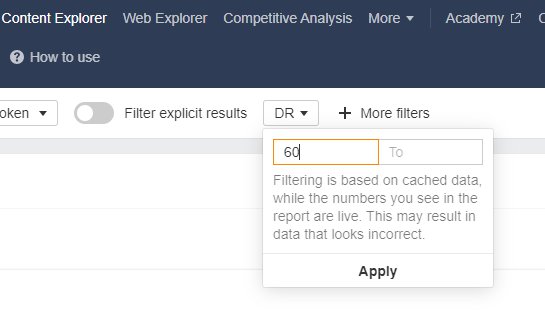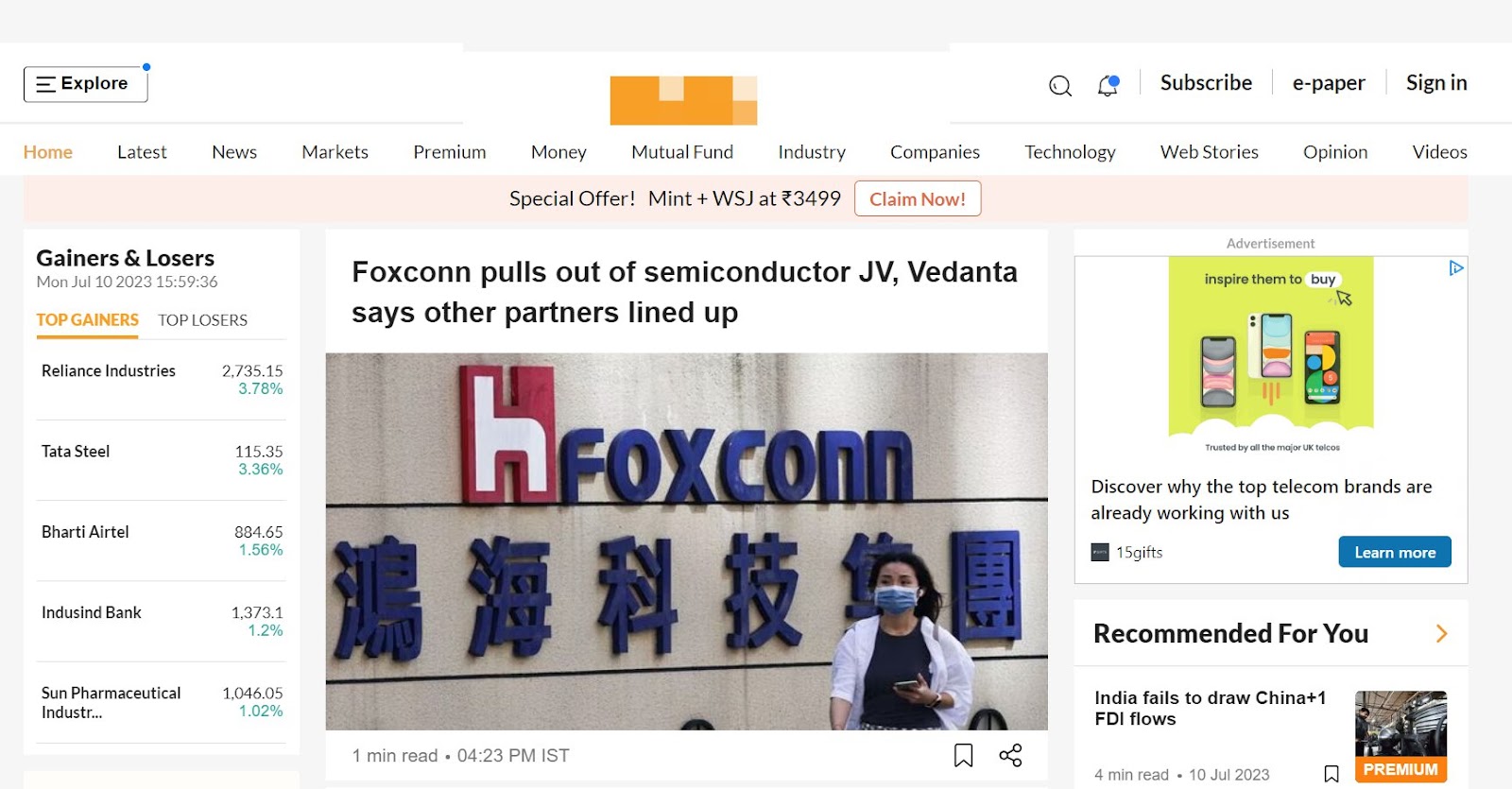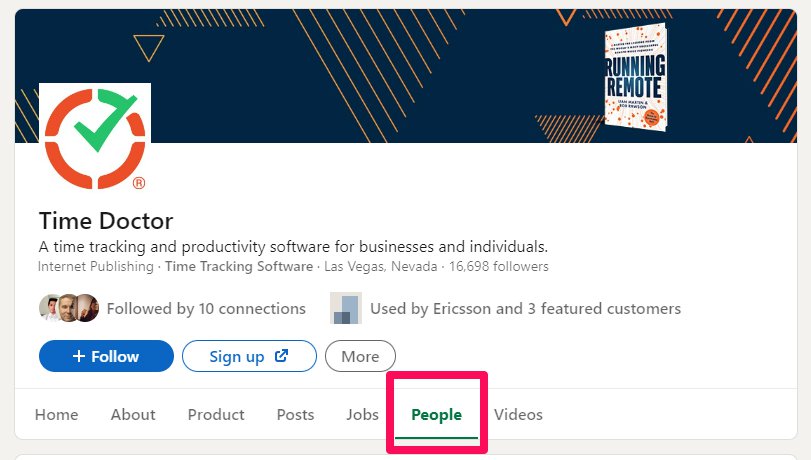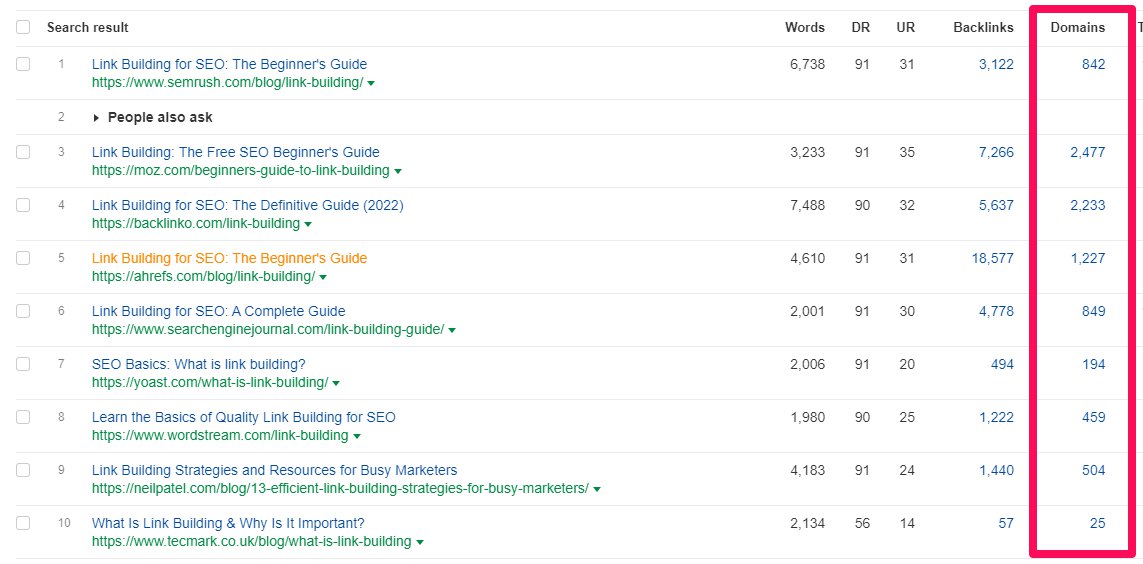Let’s face it.
If you’re reading this, you know that link building is critical to your success with SEO.
So, we’re not going to talk about Dofollow links vs. Nofollow links. You already know that.
What you ARE going to learn, however, is a good Backlink Management strategy will help you keep a good backlink profile and rank more content in search engines, faster.
When it comes to backlink management, we tend to focus on 3 activities.
First, we focus on getting high quality backlinks.
Second, we monitor backlinks and disavow any bad links that might happen.
And finally, we focus on the velocity of the links acquired in comparison to the links acquired by our competitors.
So let’s break this down further.
What are High Quality Backlinks?
At Content Guppy, we would rather spend more time focusing on getting one really good link than spend that same time focused on getting 5 mediocre links.
Good links mean a better backlink profile. The better the backlink profile, the better your search engine rankings. It's that simple.
So, let’s talk about what a high quality backlink is - at least in our opinion.
By the way, every single one of our link building campaigns runs through these criteria.
Domain Rank
We typically use Ahrefs Domain Rank formula to determine the “authority” of the site. So for us, when we do outreach, we typically don’t do outreach to any site that has a domain rank of less than 60.
In order to easily find DR60+ sites, we use Ahrefs Content Explorer and apply the DR filter.

Link building is HARD! So we want to reach out to sites with the highest authority. Most of the time, the higher the domain rank, the better the link. (More clarification on this in a second).
Organic Traffic
Once we filter the sites out with low DR, we then create a minimum traffic filter. At Content Guppy, our minimum site traffic is 1,000 organic visitors. This shows that search engines are sending traffic to the site - just giving it a bit more “credibility”.

Type of Site
And last but not least, we look at the type of site that we reach out to.
When it comes to a good backlink profile, this might be the single most important thing we look for.
There are a lot of sites that look like good sites. They have a high domain authority, good website design, and they have good traffic.
For instance, this site might look like a good site.

It has a domain rank of 87. Very High!
It gets well over 1000 visitors a month.
But is it a good link?
I would argue no. And the reason is, when you look a bit deeper, the site isn’t really relevant to any particular industry. The articles are a bit “fluffy”.
And when you analyze sites like this, the ratio of internal referring domains compared to external links is unnatural.
We’ve found that links from sites like this don’t move the needle as much as we’d like them to.
Instead, what we do is find links that are only on SaaS sites or Agency/service sites. In other words, no spammy links from PBNs, content farms, generic news sites, or link farms that will affect link quality.
Benefits of Effective Backlink Management
When you have an effective backlink management strategy, you're going to create a great backlink profile which will help you increase MRR as an accelerated rate.
Each link is going to mean more.
Each page is going to rank faster in search engines. So make sure you research your competitors' backlinks as well to have a great backlink profile.
You’ll only need to build 1 or 2 links to that bottom of the funnel content instead of 7 or 8 links.
Developing a Backlink Management Strategy
In order to effectively implement a backlink management strategy for your company, you’ll need to develop a system which you can execute on monthly.
Here’s what we do at Content Guppy.
Backlink Audit
One of the best ways to manage your backlinks is to do a monthly audit.
Every month we look at the links we’ve acquired to make sure that they fit our criteria. And we also look at were acquired organically - meaning the links that we received that we didn’t actively reach out to.
We’re looking to make sure that the inbound links we acquired from decent sites. So many times, these links are on PBNs or some sort of spammy content siphoning site.
Evaluate Backlink Opportunities
Next we’ll look at some of the high quality backlinks that our competitors have received and look to see the content that received those links.
This is one of a number of factors that goes into our content strategy. We want to create content and linkable assets that high quality sites WANT to link to.
Create Content To Attract Inbound Links
Based on our evaluation in step two, we’ll create content that attracts natural backlinks and distribute them through our newsletter. These are called “linkable assets”.
We’ll hope to pick up a couple of links from good sites before we do our manual outreach.
Outreach for Links
Source Articles
First, we have to find a list of sites who might want to include our link in their article.
To do that, we use Ahrefs Content Explorer.

Then we apply all of our filters.
These are:
- One page per domain
- Exclude Home Page
- Site Traffic 1000
- Domain Rating from 60-90

Then we export the list.
Find Person Closest to the Content
Now we have to find the person to reach out to.
We use LinkedIn to do this.
We don’t want to send our pitch to the CEO, Founder, or CMO if it’s not essential.
Instead, we want to send our pitch to the SEO manager or the content marketing specialist.
So you can search the companies, and then go to the “people” tab.

And then you want to find people with “Content” or “SEO” in their job title.

Send a Pitch
Now, it’s time to send your pitch.
Three things:
Thing 1: Make it personal. Use their first name at all times.
Thing 2: Show that you’ve ACTUALLY read the content. This is important. (Actually read the content!)
Thing 3: Ask for the link.
Here’s an email that worked for me.
Subject: Quick Question
Hey Victor
was reading your article on the 6 ways your B2B Business Can Establish Trust with Your Prospects.
You mention creating content marketing assets as one of the ways to create trust. Far too often, brands think they can just buy some ads on Facebook or Google or whatever, and see success.
But I can't tell you how many times a customer has said to us "we've been reading your blog for 2 years."
The other idea that you had which is really good is making it easy to contact the brand. If I can't find a way to get in touch with someone, then I'm not buying.
We wrote a post called "how to set up a call center" that can help companies make it easy for their customers and prospects to reach out to them. It will fit perfectly in your article.
Let me know if you’re interested.
Greg
The SEO Tools we Use for Backlink Management
So many tools are available, but which are the best to use?
Here are some of our favorite tools:
Ahrefs
Ahrefs is the bleeding heart of our backlink management strategy and our link building campaigns. We use it for a number of things.
Thing 1: Identify Content
We use the Content Explorer feature to identify potential link targets for our content.

With this tool, we can identify high quality link opportunities to reach out to.
Thing 2: Link Analysis
We also use it for our internal link analysis.

This is where we monitor backlinks that we have links to in order to make sure they’re all quality links. We also see which of our links are nofollow links.
Thing 3: Link Building Opportunities
And finally, we can use the keyword research tool to identify content opportunities that receive a lot of high quality links.
This is perfect for creating a link building strategy because pages that receive a lot of referring domains means people are willing to link to them.

Outreach
Outreach is our own internal tool that, among other things, gives us the ability to identify sites that are SaaS and Agency sites.

With a simple pass/fail, we can find the sites that we want to reach out to, and remove the “spammy” sites from our outreach list.
Buzzstream
Buzzstream is the tool we do our outreach with. We have all of our templates and sequences lined up and ready to go.
Once our internal tool, Outreach, provides us with the names and email addresses of the qualified targets, we simply load them into Buzzstream and press send.
Google’s Disavow Tool
Finally, when there are bad or spammy links, we use Google’s disavow tool in order to, well, disavow the link.
This ensures that our backlink profile remains in Google’s good graces.
Google Search Console
With Google Search Console, we are able to find broken links, links that need to be redirected to proper content. We're able to analyze ranking trends as well as the amount of clicks and impressions each page gets.
Final Words
Backlink management is an often overlooked yet highly effective way to increase search engine rankings, traffic, and your MRR.




About The Author: Greg Digneo
I love helping people with their marketing. So I created this site to give you tools and information to help you grow your blog, build your audience, and get more sales.
More posts by Greg Digneo